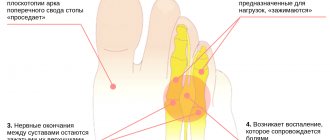At least a third of the world's population suffers from aerophobia - the fear of air travel. About 14% do not dare to board a plane at all, another 10% make a serious effort. And this despite the well-known fact: airplanes are one of the safest modes of transport. According to statistics, the real probability of dying in a plane crash is estimated at 1 in 45 million. In addition, it is a very convenient transport, allowing you to quickly get to anywhere on the planet. It is not surprising that many people with aerophobia dream of not being afraid to fly on an airplane.
Features of aerophobia
Aerophobia is a mental disorder that can be an independent process or part of another phobia (fear of closed spaces or heights). The fear of flying on an airplane is often the result of some emergency situation that has affected the subconscious.
The severity of fear may vary. For some passengers, it is enough to drink a little alcohol, and they gradually get rid of the fear. But sometimes the phobia is so intense that a person simply cannot force himself to board an airliner. For many, the fear of flying manifests itself in stomach cramps, nausea, and the urge to vomit a few days before the flight. At the airport, your hands and feet become wet and cold, sweating appears, and on board the plane your heart begins to pound with a feeling of lack of air.
Important! If not properly treated, aerophobia can develop into panic disorder with sympathoadrenaline crises.
The difference between a phobia and simple fear
However, the fear of flying in an airplane should not always be considered aerophobia. Fear is a natural defense mechanism for the human body that warns against potential danger. Flying cannot be called a natural state for people, so there is nothing abnormal in the appearance of fear. The passenger realizes that the risk here is minimal, so he reacts to the flight adequately, even if he retains a certain sense of fear.
Aerophobia, like any mental health disorder, is irrational. The information that it is safe to fly is simply not perceived by a person. But every message about a plane crash becomes another confirmation of the high danger of flights.
Old plane
How does a passenger rate the plane? He comes in and sees: a new seat, carpets, a pleasant smell - that means the plane is new. But the interior of an airplane is not an indicator of its technical condition. When there were intensive flights to Egypt (it was on this route that for some reason rowdy passengers flew all the time), in the new cabin, after several flights, the back of the seat was already torn off, chewing gum was stuck on, the inscriptions “I love you, Masha”, a three-letter word. If a pocket on a seat is torn off, the entire row of seats must be dismantled, and the plane must take off in one and a half to two hours. They simply don't have time to fix it.
The age of an aircraft and its reliability are very loosely related. There are still several airlines in the world that operate the Douglas DC-3. They stopped producing them in the middle of the 20th century, but they still carry passengers. American Airlines has one of the oldest fleets in the world: the average age of its aircraft is 17 years. The youngest is at Pobeda: our planes are not two years old.
I have had the opportunity to fly on airplanes of both very ancient design and very recent ones. And it turned out that new ones break more often. Surprising but true. It’s like with a car: when you take it from there, it’s the same here – some small dirty tricks keep popping up.
Alexey's words sound convincing. Sometimes he switches to technical details, draws diagrams, writes formulas, uses words I don’t understand. There is no doubt about his professionalism. And he, in turn, vouches for the others: an inexperienced person will never be seated at the controls of an airplane. And in general, it is much more dangerous to smoke near the entrance in the spring. Icicles fall more often.
Reasons for fear of flying
Why are people so afraid of flying on an airplane that sometimes they can’t even overcome their fear? There are several reasons for this situation:
- Modern man received the fear of being above the ground from his ancestors along with other genetic information. At one time, people were very frightened by the “iron birds”, so many people flinch when they hear the sound of an airplane.
- When an airliner takes off, the body realizes that it is outside its usual environment. Passengers prone to panic and phobias are faced with a feeling of fear.
- Some people are frightened by previously watched films or read books about plane crashes, or materials about crashes in the media.
- Fear often arises during the first flight; this is where the fear of the unknown comes into play. Sometimes such an experiment turns out to be unsuccessful, or the body mistakes ordinary motion sickness for danger and gives a corresponding signal to the brain.
Often everything is explained by a reluctance to trust your life to strangers - pilots, as well as distrust of a large number of instruments and devices unknown to man. Aerophobia can be a consequence of a long-term depressive state, severe stress or psycho-emotional shock that is not related to flying at all.
Important! Scientists have identified a genetic predisposition to such a phobia. If someone in the family suffers from such disorders, this tendency can be inherited.
Impressionable people who focus their attention on previous negative events for a long time are more susceptible to fear.
Turbulence
Not all companies in the world, in principle, bypass the bumpy plane - Asians always fly directly. Most of the videos of trays and items falling from luggage compartments are from Asian airlines. Probably it’s a matter of mentality - they believe in reincarnation.
Jokes aside, imagine a large glass ball. Let's put a mouse there and let it run into the stream. He floats, he is rocked by the current. What will happen to the ball? Nothing. What will happen to the mouse? Nothing either, but she will be chatted. The plane flies in an uneven environment - there are air currents. Between Greenland and Canada over the Baffin Sea (there is approximately 800 km, flight hour) the wind blows on average 300-400 km per hour. It's always shaking there. Sausages from the heart.
Why do you need to wear a seat belt? So that your head doesn't hit the ceiling, but nothing will happen to the plane. Therefore, the issue of turbulence should not arise at all. Shakes and shakes.
Manifestations of aerophobia
Aerophobia is characterized by a variety of physical, somatic and psychological symptoms. The manifestations of the first two include:
- Increased heart rate.
- Development of tachycardia.
- Pain in the chest area.
- Increased sweating.
- Vomiting and nausea.
- Frequent urination.
- Tension headaches.
- Redness or paleness of the face.
- Tremor of legs and arms.
You can determine whether a person has aerophobia based on a number of signs. The presence of an irrational fear of flying is indicated by the appearance of panic long before departure, suspicions that the flight attendant and pilots are hiding something, thoughts of inevitable death when the airliner encounters turbulence.
People with this disorder feel extremely uncomfortable throughout the entire flight, squeeze into the seat during takeoff and landing, and constantly listen to the operation of the engines, trying to hear signs of a breakdown.
Other psychological symptoms include:
- Increased irritability a few days before departure.
- Canceling a flight at the last minute.
- Categorical reluctance to use air transport.
- Obsessive thoughts about the plane crash.
- The use of special drugs for sedation.
Important! Prolonged stress after a flight also indicates aerophobia.
How to overcome fear
Since traveling by air saves a lot of time and effort, many people try to overcome their fear of flying. Submission to your fears leads to the development of a serious illness, so you should try to overcome irrational fears. The best way to do this is to simply distract yourself from anxious thoughts and your own phobia, and switch to something else.
To stop being afraid of flying on an airplane you need to:
- Try to prepare yourself correctly in advance, at least not read reports about plane crashes and not watch films on this topic.
- Choose a flight with a departure at a comfortable time (for some it is better to fly at night, for others it is easier in daylight).
- Check in in advance, asking for a seat away from the portholes.
- Do not land in the tail zone, where turbulence is most felt.
- Refuse the desire to drink something alcoholic before the flight, do not abuse coffee and sedatives.
- Find something interesting to do (download a game on your tablet, pick up an exciting book, crossword puzzles.
- Listen to calm music on headphones, which will drown out the noise of the engines.
It is easier to overcome fear when communicating with your seatmates, even if one of them turns out to be an aerophobe. You can do it even simpler - sleep during the flight. For this, earplugs, a blindfold, and a pillow under the neck may be useful. Many airlines offer blankets or bedding to passengers. Sometimes it is enough to lie down with your eyes closed, thinking about upcoming pleasant events or loved ones, to overcome the fear of flying.
Important! In such situations, breathing exercises with short breath holding help.
You should try to overcome your fear of flying when the first symptoms appear. You can discuss your feelings with a loved one in a calm environment. Often this helps to look at things differently. It is advisable to realize that your experiences will not have any impact on the course of the flight and not to focus on negative emotions.
Important! In fact, the turbulence that many fear so much does not pose any risks to the aircraft. The situation is roughly similar to driving on a rough road, nothing more.
Specialist help
But if you cannot overcome your fear of flying on an airplane on your own, you can use professional psychological help. To do this, you need to find an experienced specialist who will identify the true causes of fear and teach you how to fight the phobia. A psychotherapeutic course may be required, but after it, flying will be perceived more naturally.
Psychologists use a variety of methods to overcome fears of flying on an airplane. The most commonly used:
- Neurolinguistic programming.
- Cognitive behavioral therapy.
- Modern forms of hypnotic influence.
- Drug therapy.
To overcome aerophobia, flight simulators are used - virtual simulators that allow you to develop a certain habit of flying. The feeling of reality of flight is created on the ground, so the fear will not be so strong. Your doctor will help you choose the right pills, but you won’t be able to get rid of your phobia with medications alone. Medicines relieve certain symptoms, but do not cure the disease itself.
Will pills help with fear of flying?
Taking any medications must be agreed with your doctor. If you have to fly often, and panic occurs every time, you will have to look for another method to overcome your fear. The doctor will tell you what to do if you are afraid of flying and how to resist this phobia.
Medicines that help get rid of fear of flying are divided into several categories:
- Mild sedatives. Such medicines are herbal based and relieve mild symptoms of aerophobia. With their help, people overcome nervousness, including before the first flight. Such drugs usually have a cumulative effect, so you need to start taking them in advance. No prescription is required to purchase them.
- Tranquilizers - can be prescribed for severe panic attacks. The tablets provide a sedative and hypnotic effect and are sold exclusively by prescription.
- Barbiturates are strong sleeping pills, used for long flights and severe aerophobia.
Sedatives are relatively safe and have no side effects or contraindications. But they cannot protect you from a panic attack. Tranquilizers are prescribed as a short-term course to eliminate the manifestations of a nervous disorder. Medicines can have long, medium or short effects. The maximum period of validity is 2 days, the minimum is less than 6 hours.
Barbiturates inhibit the functioning of the central nervous system and provide a powerful sedative anticonvulsant effect. However, in their action they are equivalent to narcotic substances, therefore they are used strictly in accordance with the rules and regulations.
Important! Taking barbiturates is accompanied by addiction and the development of persistent dependence.
Typically, medications in this group act within 25 minutes, and sometimes immediately after administration. A prescription is required to purchase them. Barbiturates have a huge number of contraindications, side effects and undesirable effects.
The pills themselves do not help eliminate the fear of flying on an airplane. However, as part of a complex effect, when combined with psychocorrection, medications can give the expected result. But before you take pills, you should start by identifying the causes of the phobia.
What to do if a child is afraid of flying
As we see, even adults suffer from a fear of air travel. Children also often face this fear, and its causes largely depend on age. Children from one to five years old sensitively capture the fears and emotions of their parents, completely focusing on them. If an adult panics, the child will support him in such an experience. In fact, it is not the flight itself that frightens children, but the stress of their parents.
Around the age of five, the fear of death appears. With a vivid and active imagination, children decide that airplanes are dangerous and begin to be afraid. The most common cause of children's fear is adults talking about flying in a negative way. For example, my mother tells how she was afraid to fly, learned to overcome her fear, and listened to stories about disasters.
In such circumstances, a child may well completely refuse to fly, not agreeing to fly even for the sake of interesting travel. Based on a small fragment of danger, a child's mind paints vivid and scary pictures.
Children often cry on an airplane, but the reasons may be different:
- The child was afraid of the unfamiliar surroundings, noisy neighbors, and the sound of the airliner engines.
- The baby could be hungry or simply tired from waiting for the flight.
- Young children often have blocked ears, and they do not yet know how to cope with this problem on their own. In this case, the mother's breast will help the newborn or infant. And for older children - lollipops for sucking during takeoff.
- Fear can be associated with past negative impressions, fear due to turbulence in a previous flight.
Children's fear of flying may be associated with other reasons. Here it is best to talk to the child, ask him why he does not want to go on vacation.
Parents can use tips on how not to be afraid of flying on an airplane and relieve children from fear. It is better to start preparing in advance:
- Tell as colorfully as possible about the benefits of the upcoming trip.
- Focus your child’s attention on the most pleasant moments that await him on vacation.
- Tell us in more detail about all stages of the flight, from check-in and waiting for departure to landing.
- Explain the rules of conduct on an airplane.
- Play pilot, flight attendant.
- Talk about birds that are constantly in the sky and enjoy flying.
- You can tell older children about the safety of airliners, take them on an excursion to the airport, and show them how planes take off and land.
We need to figure out what the child will do during the flight. It should be something that can seriously interest and captivate him: cartoons, board games, reading. For kids, you can take stickers or pencils, ready-made sets of travel games.
Parents will also need some work on themselves if they have any form of fear of flying. You need to learn to restrain your own negative emotions. Under no circumstances should you convey fear, discuss flying as something scary, or watch stories about disasters on TV. It’s better to tell your children how interesting it is to spend time on board and what views you can see from the window.
It is advisable for a child to choose a seat near the aisle so that the view from the window does not frighten him. An interesting conversation, playing on the phone, and getting to know other little passengers help you forget about unpleasant experiences. You can prepare some kind of surprise for your child and give it to him on the plane. For example, a toy that a child has long dreamed of will distract his attention from unnecessary fears.
Important! You can’t focus on the flight; it’s better to talk about what awaits you after landing.
The Man Who Was Afraid to Fly
Mark Reichlin once had to fly from Russia to Canada 16 times a year on business for his consulting company. And every flight was a tragedy: aerophobia interfered with life and work. A panic attack immediately began on board. “Half-fainting, cold sweat, feeling like you’re dying,” Mark recalls. If he was flying with colleagues, he tried to take a seat further away so that no one could see what attacks he was having on board.
One day, in the sky between Montreal and Washington, he was caught in an attack. “I collapsed on the threshold of the toilet, and, burning with shame, I could not move at all. The plane was urgently landed in Boston, and I was sent to the hospital,” says Mark. He changed trains and was late for the conference.
Usually, the phobia cost him more: he chose flights that only use large planes. Once Mark bought a ticket to Moscow with three connections: “To my horror, in Gothenburg I saw a 10-seater plane, albeit in business class. As a result, I lay unconscious all the way while the plane bounced briskly on the updrafts.”
An incident helped Mark cope with his phobia. On one of the flights, the right neighbor happened to be nearby: an elderly, talkative pilot. “He was the first person who could authoritatively convince me that an airplane in the air is a stable thing. After that conversation, I began to think and analyze,” says the former aerophobe.
In the early 2000s, Reichlin moved to Chile. Now he owns the Montreal Bagel bakery in Santiago, bakes Canadian bagels, and endures 17-hour flights to Moscow quite easily.
What you need to know about the plane
Both adults and children who are afraid of flying should get an idea of the structure of the airliner and the features of the aircraft:
- Aircraft are equipped with powerful engines that lift them into the air and keep them at altitude for a long time.
- Every airliner has at least two engines. If one of them refuses, the second will take over its functions.
- The aircraft's wings are firmly attached to the body and cannot fall off during flight.
- Every system that is used on an airliner has a backup program. In the event of a failure, the backup software package starts working. There are at least four such “back-ups” in passenger aircraft.
- The deterioration of the pilot’s well-being cannot cause a disaster, since modern air transport is equipped with a reliable autopilot system.
- From the ground, all flights are controlled by air traffic controllers; pilots are in constant contact with them and immediately learn about unfavorable weather changes and other unusual situations.
- The aerodynamic parameters of the aircraft are calculated taking into account turbulence.
Only highly qualified professionals with sufficient experience are allowed to fly aircraft. Before departure, each vessel is carefully checked by technical service staff using special diagnostic devices. The entry of dangerous objects on board is excluded due to customs inspection at the terminals.
Fear of flying is considered aerophobia only when severe symptoms occur. But even in this case, there are opportunities to overcome your fear. The main advice of experienced travelers is to distract yourself from frightening thoughts as much as possible. This rule also applies to children who are afraid of flying. But you should be careful with medications. Tablets do not solve the problem, but only relieve symptoms, and some of them are quite dangerous.











